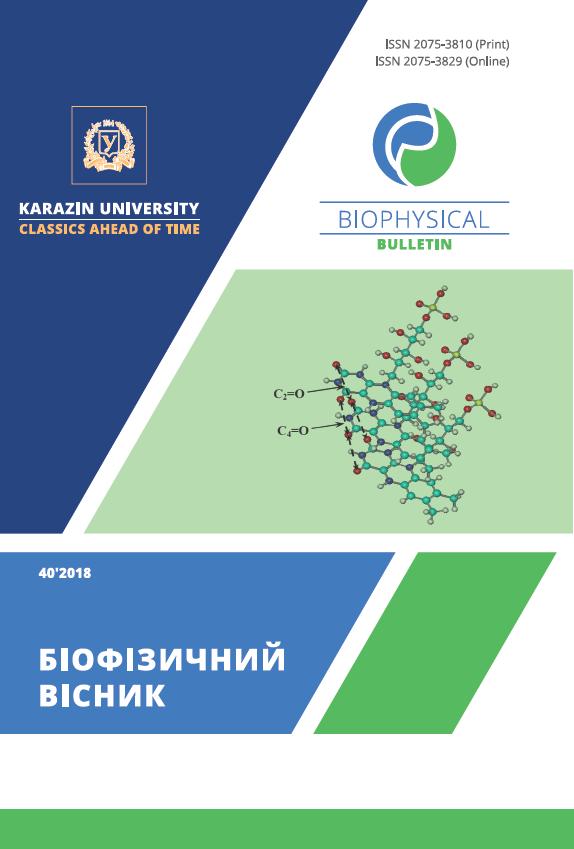Method of probabilistic determining the actual number of cancer patients using statistical data
Abstract
Background: Experts in the field of oncology recognize that the chances of a complete cure for cancer grow if the disease can be identified at an early stage. But in order to identify the disease in the bud, it is necessary not to neglect the diagnostic examination that most citizens of our country ignore. Currently, cancer takes second place in the world after cardiovascular diseases in the list of other diseases. Ukraine is second in Europe in velocity of cancer propagation. Every year in Ukraine more than 160 thousand people learn that they are cancer patient. In fact, the number of such patients is much larger than statistically revealed. The urgency of the work is due to the need to develop a methodology for determining the actual number of cancer patients, which could improve the mechanisms of early detection of cancer and increase the number of cured patients.
Objective: To develop an approach to probabilistic determination of the actual oncological morbidity of the population on the basis of known statistical data on the overall mortality and the number of detected oncological patients.
Results: Using the probabilistic approach, the probability of death of individuals who already had undiagnosed oncological disease at a certain age was calculated first, but died as a result of non-cancer reasons. Further, a formula for calculating the actual oncological morbidity of an individual at a certain age was obtained. Using the statistical data on the total number of deaths and the number of detected cancer patients at a certain age, and using the abovementioned formula, a graph of the distribution of the actual number of cancer patients, depending on age, was obtained. This allowed us to calculate the ratio of the total actual number of oncological cancer patients to the total number of cancer patients. It was value 1.95, which indicates a significant excess of actual cancer morbidity over statistically detected.
Conclusions: A probabilistic approach to assessing the actual oncological morbidity based on the statistically revealed oncological morbidity and overall mortality is proposed. The performed calculations show that the indicators of the detected oncological morbidity are almost two times less than the actual number of cancer patients.
Downloads
References
Zavarykina, T.M. (2015). Issledovanie polimorfnykh markerov genov reparatcii DNK hOGG1, XRCC1 i ERCC2 i ikh assotciatcii s riskom razvitiia nemelkokletochnogo raka legkogo i raka verkhnikh dykhatelnykh putei. Estestvennye i matematicheskie nauki v sovremennom mire, 2(26), 1-11. (in Russian).
Klark, M., & Beker, M. (2006). Rakovye stvolovye kletki. V mire nauki, 10, 29-35. (in Russian).
Leshchenko Ia.A. (2014). Onkologicheskaia zabolevaemost naseleniia promyshlennogo goroda Irkutskoi oblasti. Mezhdunarodnyi zhurnal prikladnykh i fundamentalnykh issledovanii, 11(4), 666-670. Retrieved from https://www.applied-research.ru/ru/article/view?id=6205 (in Russian).
International Agency for Research on Cancer. (2012). All Cancers (excluding non-melanoma skin cancer) Estimated Incidence, Mortality and Prevalence Worldwide in 2012. Retrieved from http://globocan.iarc.fr/Pages/fact_sheets_cancer.aspx.
Hanahan, D., & Weinberg, R.A. (2000). The hallmarks of cancer. Cell, 100, 57-70.
Bravo, R., & Axelrod, D. E. (2013). A calibrated agent-based computer model of stochastic cell dynamics in normal human colon crypts useful for in silico experiments. Theoretical Biology and Medical Modelling, 10(66), 1-24.
Siegel, R. L., Miller, K. D., & Jemal, A. (2015). Cancer statistics, 2015. CA Cancer J. Clin., 65, 5-29.
Siegel, R. L., Miller, K. D., & Jemal, A. (2017). Cancer statistics, 2017. CA Cancer J. Clin., 67(1), 7-30.
Rahib, L., Smith, B. D., Aizenberg, R., Rosenzweig, A. B., Fleshman, J. M., & Matrisian, L. M. (2014). Projecting cancer incidence and deaths to 2030: the unexpected burden of thyroid, liver, and pancreas cancers in the United States. Cancer Res., 74(11), 2913-2921.
Chen, W., Zheng, R., & Baade, P. D. (2016). Cancer statistics in China, 2015. CA Cancer J. Clin., 66(2), 115-132.
Authors who publish with this journal agree to the following terms:
- Authors retain copyright and grant the journal right of first publication with the work simultaneously licensed under a Creative Commons Attribution License that allows others to share the work with an acknowledgement of the work's authorship and initial publication in this journal.
- Authors are able to enter into separate, additional contractual arrangements for the non-exclusive distribution of the journal's published version of the work (e.g., post it to an institutional repository or publish it in a book), with an acknowledgement of its initial publication in this journal.
- Authors are permitted and encouraged to post their work online (e.g., in institutional repositories or on their website) prior to and during the submission process, as it can lead to productive exchanges, as well as earlier and greater citation of published work (See The Effect of Open Access).





